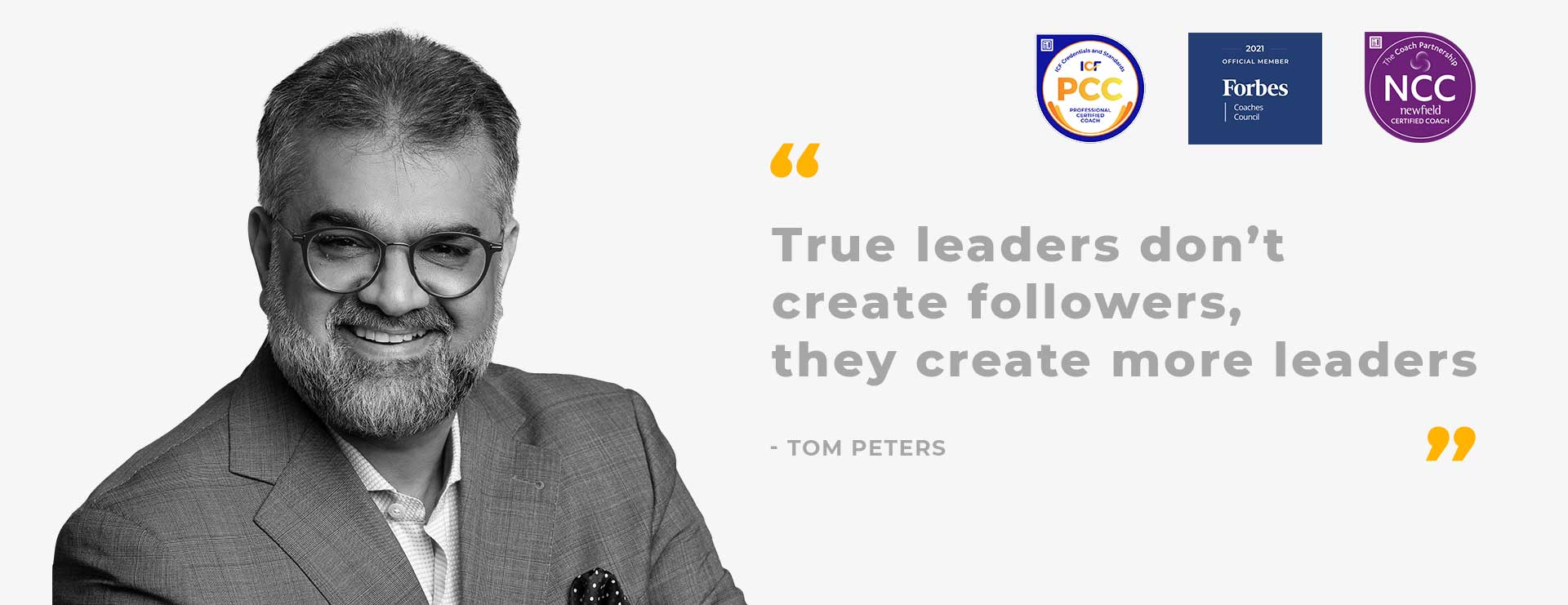APPROACH

Prasad is a practitioner of ontological coaching, which is the study (logy) of the human being (onto). Ontology refers to the study of being in general, and using this approach in the coaching process entails making the individual aware of one’s participation in the construction and co-creation of one’s reality.*
Taking a cue from a must read book – Mastery, The Keys to Success and Long-Term Fulfillment, by George Leonard – on the path to improvement: the general progression is always the same. To take the master’s journey, you have to practice diligently, striving to hone your skills, to attain new levels of competence. But while doing so, you also have to be willing to spend most of your time on a plateau, to keep practicing even when you seem to be getting nowhere.
Personal and professional evolution is a continuum; an essential aspect of the path to improvement is incremental growth, and exercising the will to continue, and persevere through plateaus (and perhaps even slopes alike) to get where we want to be. Prasad’s role is to initiate the journey of introspection, goal-setting and generating practices that serve as the first step forward.
Through a collaborative process, he focuses on awakening a “new observer” in the client in three areas – body, emotion and language. This allows for more meaningful and targeted interventions going forward, with the objective of creating a more effective, authentic and powerful individual at work and in your personal life. When looking at enterprises as a collective, Prasad crafts appropriate strategies to bring together organization design, culture and leadership to create effective business practices, that go on to achieve competitiveness and scale.
Specifically, Prasad’s approach to coaching involves the following elements:
- Coaching is a relationship, and an equal partnership; working together to achieve the coachee’s objectives through identifying new possibilities in powerful conversations with the coach.
- The coaching process is designed jointly with the coachee/sponsor and is focused on the goals identified by them. The coachee comes prepared with some ideas of what they’d like to go over and the process only ever goes as far into it as the coachee wants to – they set the boundaries.
- They explore the future (possibilities) the coachee wishes to generate.
- The coachee and coach will jointly identify the barriers that are blocking them from achieving this future and focus on practices and actions that will generate the shifts, to remove or overcome these barriers so that they are living in their new story.
- The process also involves the co-creation of practices for the coachee to continue in between sessions.
- Coaching is not advice, therapy, or counseling, but, a pragmatic approach to coaching involves consulting, mentoring and educating, as needed.